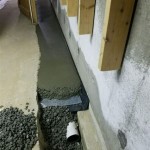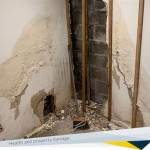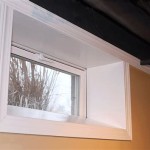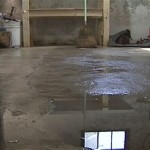Transform Your Basement Ceiling: A Comprehensive Guide
A well-painted basement ceiling can dramatically enhance the aesthetics and functionality of your subterranean space. Whether you seek to brighten up a dark area, conceal unsightly pipes, or add a touch of sophistication, painting your basement ceiling is a project you can undertake confidently with the proper preparation and execution.
1. Preparations: A Foundation for Success
Before wielding your paintbrush, thorough preparation ensures a smooth and professional-looking finish. Begin by clearing the area of any obstructions such as furniture or light fixtures. Cover the floors and any remaining fixtures with drop cloths or plastic sheeting to protect them from paint splatters.
Inspect the ceiling for any imperfections such as cracks or holes. Repair these blemishes using spackling paste or joint compound. Allow ample time for these repairs to dry before sanding them smooth. A clean and flawless surface provides an ideal foundation for the paint to adhere.
2. Safety First: Protecting Yourself and Your Basement
Working in a basement often involves dust, fumes, and potential hazards. Ensure your safety and the well-being of your basement by adhering to these precautions:
- Wear a respirator or dust mask to prevent inhaling harmful particles.
- Ventilate the area by opening windows or using fans to prevent the accumulation of fumes.
- Cover all electrical outlets and light fixtures with masking tape or plastic bags to avoid accidental paint contact.
- Lay down protective drop cloths to prevent paint spills from damaging your basement floor.
3. Choosing the Right Paint: Basecoats and Topcoats
The type of paint you choose significantly impacts the durability and aesthetics of your painted ceiling. For basements, consider both a basecoat and a topcoat:
- Basecoat: A primer or basecoat provides a smooth and uniform surface for the topcoat to adhere. It seals the ceiling, reduces paint absorption, and improves overall coverage.
- Topcoat: The topcoat is the final layer that imparts color and desired finish to your ceiling. Choose a paint specifically designed for ceilings, which often features a higher concentration of solids for better coverage.
4. Painting Techniques: Roll, Spray, or Brush
The efficiency and desired outcome influence your choice of painting technique:
- Roller: Rolling is the most common and versatile technique. Use a roller with a 3/8-inch to 1/2-inch nap for ceilings.
- Sprayer: Spray painting provides an even and consistent finish. However, it requires specialized equipment and proper ventilation.
- Brush: Brushing is suitable for small areas or intricate details where rolling or spraying may not be feasible.
5. Application Process: Precision and Patience
Execute the painting process methodically to achieve an immaculate finish:
- Basecoat: Apply the basecoat in even, overlapping strokes. Allow it to dry completely before proceeding with the topcoat.
- Topcoat: Similar to the basecoat application, apply the topcoat in overlapping strokes. Start from the corners and work your way towards the center.
- Multiple Coats: For optimal coverage and a professional-looking finish, apply two or more coats of the topcoat. Allow each coat to dry thoroughly before applying the next.
6. Drying Time: Patience Yields Rewards
Resist the urge to rush the drying process. Allow ample time for the paint to dry completely. This prevents smudging, ensures proper adhesion, and enhances the overall durability of the finish.
The drying time varies depending on factors such as the paint type, humidity, and temperature. Refer to the manufacturer's instructions for recommended drying times.
7. Cleanup and Maintenance: Protecting Your Investment
Once the paint is dry, it's time to clean up and maintain your newly painted ceiling:
- Cleanup: Remove all masking tape, plastic sheeting, and drop cloths. Clean brushes and rollers with appropriate solvents or water, and dispose of them properly.
- Maintenance: Regularly inspect your basement ceiling for any signs of damage or wear. Touch up any imperfections with a small brush and matching paint color to maintain its pristine appearance.
By following these comprehensive steps, you can transform your basement ceiling from a neglected space to a vibrant and visually appealing part of your home. Enjoy the satisfaction of a well-painted basement ceiling, adding value and beauty to your subterranean escape.

How To Paint An Unfinished Basement Ceiling Semigloss Design

How To Paint An Unfinished Basement Ceiling Semigloss Design

Our Painted Basement Ceiling Without A Sprayer And The Perfect Black Paint This Diy Life

Tales Of Painted Basement Ceilings And Pole Dancing Woes Beth Bryan

Tales Of Painted Basement Ceilings And Pole Dancing Woes Beth Bryan
Diy Painted Basement Ceiling Project First Thyme Mom

Our Painted Basement Ceiling Black With Photo Examples

Our Painted Basement Ceiling Without A Sprayer And The Perfect Black Paint This Diy Life

Painting An Unfinished Ceiling 100 Things 2 Do

How To Paint An Unfinished Basement Ceiling Semigloss Design
Related Posts







